Study the diagram given below and then answer the questions.
Role of plants and animals in the formation of ammonium compounds.
Step-by-Step Solution:
1. Understanding the Role of Plants and Animals:
- Plants and animals contribute to the nitrogen cycle through their life processes. When plants and animals die, their bodies decompose, releasing nitrogenous wastes.
2. Decomposition Process:
- The decomposition of dead plants and animals is carried out by microorganisms, including bacteria and fungi. These organisms break down the organic matter.
3. Formation of Ammonia:
- During the decomposition process, the nitrogen present in the organic matter is converted into ammonia (NH₃) by the action of decomposing bacteria.
4. Conversion to Ammonium Compounds:
- The ammonia produced is then further converted into ammonium ions (NH₄⁺) in the soil. This conversion is facilitated by the presence of water and soil conditions.
5. Role of Nitrifying Bacteria:
- Nitrifying bacteria in the soil play a crucial role in this process. They help in the conversion of ammonia into ammonium compounds, which are essential for plant growth.
6. Importance in the Ecosystem:
- The formation of ammonium compounds is vital for the ecosystem as it provides a source of nitrogen that plants can absorb and utilize for their growth.
Final Answer:
Plants and animals contribute to the formation of ammonium compounds through the decomposition of their organic matter, which releases nitrogen that is converted into ammonia by bacteria. This ammonia is then transformed into ammonium compounds, crucial for plant nutrition.
---
- Plants and animals contribute to the nitrogen cycle through their life processes. When plants and animals die, their bodies decompose, releasing nitrogenous wastes.
- The decomposition of dead plants and animals is carried out by microorganisms, including bacteria and fungi. These organisms break down the organic matter.
- During the decomposition process, the nitrogen present in the organic matter is converted into ammonia (NH₃) by the action of decomposing bacteria.
- The ammonia produced is then further converted into ammonium ions (NH₄⁺) in the soil. This conversion is facilitated by the presence of water and soil conditions.
- Nitrifying bacteria in the soil play a crucial role in this process. They help in the conversion of ammonia into ammonium compounds, which are essential for plant growth.
- The formation of ammonium compounds is vital for the ecosystem as it provides a source of nitrogen that plants can absorb and utilize for their growth.
Plants and animals contribute to the formation of ammonium compounds through the decomposition of their organic matter, which releases nitrogen that is converted into ammonia by bacteria. This ammonia is then transformed into ammonium compounds, crucial for plant nutrition.
Topper's Solved these Questions
- BOOK - ICSECHAPTER - ECONOMIC IMPORTANCE OF BACTERIA AND FUNGIEXERCISE - 3 Marks Questions7videos
ECONOMIC IMPORTANCE OF BACTERIA AND FUNGI
- BOOK - ICSECHAPTER - DISEASES : CAUSE AND CONTROL EXERCISE - Review Questions (D. LONG ANSWER TYPE)5videos
DISEASES : CAUSE AND CONTROL
- BOOK - ICSECHAPTER - HEALTH ORGANISATIONS EXERCISE - Review Questions (Long Answer Type)1videos
HEALTH ORGANISATIONS
Similar Questions
Study the diagram given below and then answer the question that follow :
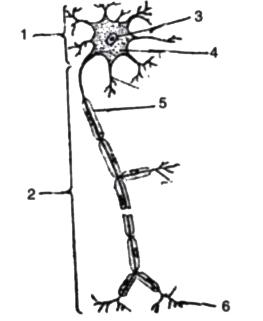
Identify the cell.View SolutionStudy the diagram given below and then answer the questions that follow :
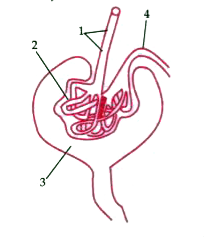
Name the stages involved in the formation of urine.View SolutionStudy the diagram given below and answer the questions that follow :
What is emulsification?View SolutionStudy the diagram given below and then answer the questions that follow:
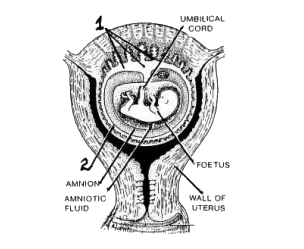
State any two functions of the amniotic fluid.View SolutionStudy the diagram given below and then answer the questions.
Name the bacteria that converts
(a) ammonium compounds to nitrates
(b) nitrites to nitrates.View SolutionStudy the diagram given below and answer the questions that follow:

Label the parts numbered as 1 and 2View SolutionStudy the diagram given below and then answer the question that follow :
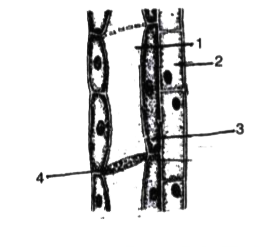
Name the parts labelled 1,2,3 and 4.View SolutionStudy the diagram given below and answer the questions that follow:
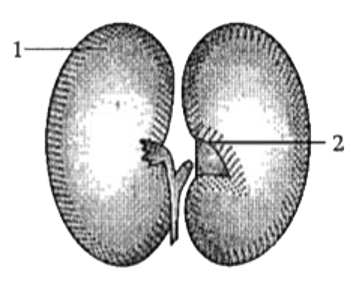
Label the parts numbered as 1 and 2.View SolutionStudy the diagram given below and then answer the questions that follow :

Name the parts labelled 1, 2, 3 and 4.View SolutionStudy the diagram given below and answer the questions that follow :

Explain the term .Axillary bud..View Solution

